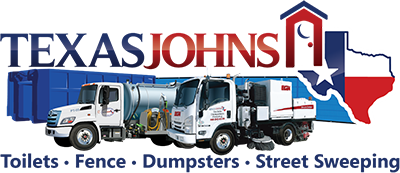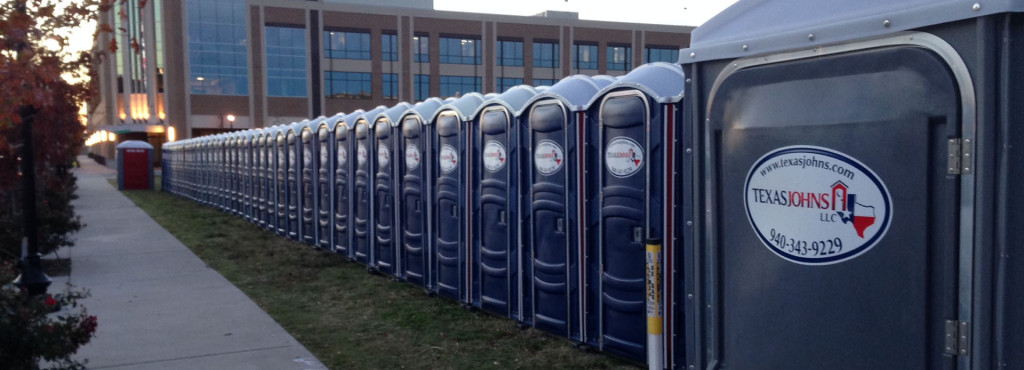In the construction industry, keeping workers safe and healthy is vital. This includes following the Occupational Safety and Health Administration (OSHA) rules about portable toilets at construction sites. A company like Texas Johns can help you meet these requirements.
Portapotties for All: Providing Enough Portable Toilets
The goal of OSHA’s guidelines is to prioritize the well-being of workers. A key aspect of these regulations concerns providing adequate sanitation facilities, specifically portable toilets.
Avoiding Long Lines and Health Problems
OSHA’s guidelines emphasize the necessity of having enough portable toilets on site to prevent workers from having to wait in long lines.
This isn’t just a matter of convenience, though: it can also impact health. Long waits lead to discomfort and even serious health complications for workers forced to delay their relief. This creates a stressful work environment and lowers overall job satisfaction.
Ratio of Toilets to Workers
OSHA has a clear requirement for the ratio of portable toilets to workers. For every 20 workers on a 40-hour workweek, at least one portable toilet must be available. This ratio ensures toilets are readily accessible to workers when needed, reducing wait times and their associated health risks.
Placing Portable Toilets Where Workers Need Them
Construction site workers are often spread across various zones and levels, so having toilets readily accessible becomes a matter of convenience, efficiency, and safety.
OSHA’s regulations make clear the need for strategic placement of porta-potties, ensuring their position maximizes utility and minimizes disruption.
Placement Near Work Zones
One of the critical aspects of OSHA’s guidance is that the toilets should be where workers are actively engaged in their tasks. This means analyzing the layout of the construction site, understanding the flow of workers and placing them so as to serve the maximum number of people without them having to travel large distances. If toilets are too far from work areas, workers may waste valuable time walking back and forth, which reduces overall productivity.
Avoiding Safety Hazards
Portable restroom placement at a construction site isn’t just about convenience; it’s also about safety. A poorly placed toilet could become a safety hazard if it obstructs paths or is in an area prone to heavy machinery traffic. OSHA’s guidelines emphasize the importance of positioning toilets in safe, accessible locations, considering each construction site’s unique dynamics.
Portable Toilet Maintenance and Regular Cleaning
Occupational safety and health extend beyond immediate risks like falls and equipment malfunctions. In a construction site, where workers can spend long hours, their portable toilets’ condition can significantly impact morale and health. OSHA has therefore established guidelines regarding the state and hygiene of portable toilets.
Regular Cleaning to Prevent Odors and Diseases
Portable toilets require regular maintenance to prevent potential health risks. Stagnant conditions, waste buildup and lack of proper cleaning can create an environment where bacteria thrive, leading to disease.
OSHA’s regulations stress the need for regular cleaning, not just as a courtesy to workers but as a critical health measure.
Hand Sanitizer Dispensers
In addition to cleaning, OSHA recommends adding hand sanitizer dispensers to portable toilets. Hand hygiene is a fundamental part of infection control, and providing an opportunity for workers to clean their hands after using the bathroom is essential in minimizing germ spread.
Relief for Everyone: Special Accommodations
Meeting the needs of all your workers is more than a matter of courtesy: it’s a legal and ethical imperative. OSHA mandates you provide suitable facilities to accommodate individuals with disabilities. This extends to the provision of ADA-compliant portable toilets.
Understanding ADA Compliance
The Americans with Disabilities Act (ADA) sets standards to ensure public facilities are accessible to individuals with disabilities. In the context of portable toilets, ADA compliance means providing facilities designed with features like wider doors, handrails and other accommodations that make them accessible to those with mobility challenges.
OSHA’s regulations build on the principles of ADA by requiring employers to provide suitable facilities for workers with special health or physical needs. It’s not just a legal formality but an expression of respect and care for the workforce’s diverse needs.
Going Beyond Compliance
While compliance with OSHA’s regulations and ADA standards is a legal necessity, it also represents an opportunity to cultivate a more compassionate and inclusive workplace culture. By proactively addressing the needs of workers with disabilities, employers demonstrate a commitment to equality and empathy that goes beyond mere legal compliance.
Texas Johns: Helping You Meet OSHA Requirements
Following OSHA’s rules for portable toilets is not just a legal matter: it’s about taking care of your workers. Texas Johns can provide the support you need to make sure safety and hygiene are top priorities.
We help construction companies follow the rules, creating a safe and clean work environment. Our commitment to health and OSHA’s standards helps you build a better workplace.
Texas Johns is ready to assist if you need help with OSHA’s requirements for portable toilets at your construction site. We understand what’s required and can work with you to make it happen.
We offer a range of portable toilet rental services, from providing enough toilets to ensuring they’re placed correctly, cleaned regularly, and suitable for all workers. With Texas Johns, you can create a site where safety and dignity are paramount. Contact us today for a more secure and compassionate future for your construction project.






